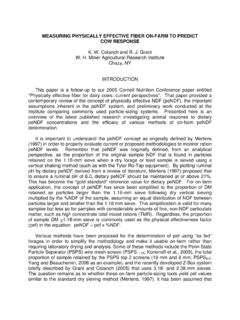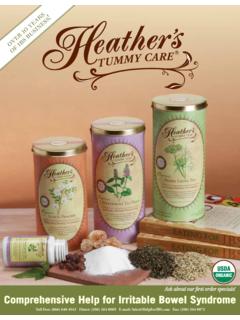Transcription of -Tips for Success on the PRT -final2 - Luke Swartz's Homepage
1 tips for Success on the PRT Want to improve your PRT score? Want to help someone else do better? Here are a few useful tips for doing well, which should not only help you, but which you can share with your sailors or marines to help them improve when you hit the Fleet. Year-Round: Consistent Fitness There s no way to do well on the PRT without keeping at least a basic level of consistent fitness all year round. No matter how good you are at cramming for academic exams, if you sit around on your duff for the six months between PRTs, your results will suffer. Besides, there are lots of other benefits to keeping physically fit: looking and feeling good, prolonging the quality and quantity of one s life, setting the example for one s sailors or marines, and being able to deal better with the physical stresses of military life. So, how do you get and keep this consistent fitness? Simply follow three steps: Training, nutrition, and rest. 1.
2 Training There are basically two components of physical fitness: cardiovascular fitness (how well your body especially heart and lungs respond to stress over time) and strength (how much force and speed your muscles can produce). There are hundreds of ways of training for each: a wide variety of sports and other activities (including hiking, dancing, yoga, sailing, and gardening) all build some combination of cardiovascular fitness and strength. When the weather s bad, there are a number of indoor sports and workout machines that can substitute for outdoor activities. Most good cardiovascular workouts will involve your legs somehow and last at least 30 minutes. As for focusing on strength training, there are somewhat fewer options (such as plyometrics, calesthenics, and weight training). Perennial PT superstar MIDN Kent notes that especially women need to focus on strength training, particularly because some lack upper body strength: Too often, you go to the gym and you see all the girls on the cardio machines and only guys lifting weights.
3 She suggests that one low-pressure way to get into weight lifting is to take a class, so that there will be support as you learn what to do. Indeed, each of our campuses provide a variety of classes, intramural programs, and club sports that can help you keep a healthy, active lifestyle throughout the year similarly, after you are commissioned, you ll find that most bases offer extensive Morale, Welfare and Recreation (MWR) programs that mirror those found on college campuses. 2. Nutrition As the saying goes, You are what you eat. Quite literally, the flesh and blood that makes up your body all comes, one way or another, from the food you ingest. Thus, no matter how good your workout program is, if you don t eat right, you won t have good health. Books can and have been written on nutrition, but the following is a quick summary of things you can do to eat better: - Consistency. MIDN Kent notes that if you wish to make long-term changes to upgrade an unhealthy diet, it is easiest to make small changes over a longer period of time than to make many major changes tomorrow.
4 One extreme example of inconsistency is crash or yo-yo diets, in which one drastically changes one s diet, and then goes back to one s original diet. While a few of these programs work to effect short-term weight change, in the long run you end up worse than when you started not to mention that it s extremely unhealthy. Similarly, unhealthy eating disorders trouble a number of people, both men and women in fact, a recent study by CAPT Peggy McNulty at the San Diego Naval Medical Center showed that Navy men are more likely than either civilian men or women to show eating disorder symptoms. What kinds of symptoms? Vomiting and using laxatives or weight-control pills (for bulimia), eating very little (for anorexia), constant fatigue, feeling faint or dizzy, missed periods (for women, you re a man and you miss a period, you re probably talking about punctuation), and obsession with food. If you think you may show signs of an eating disorder, it s best to get some professional help or at the very least, talk to a trusted friend, midshipman, counselor, etc.
5 Most of our campuses have good support for this, and in the Navy, most bases have a Fleet and Family Support Center that provides counseling. If you have a friend whom you suspect might be having problems with an eating disorder, be sure to focus on what you have physically observed and how it makes you feel ( I ve noticed that you don t seem to be at the dining hall as much as you used to, and you look really m worried about you. ). - Keep a Record. One key way to get ahold of your nutrition habits is to find out what you do now. Write down every single thing you eat over the day including the portion size, as far as you can figure it out. Among other things, this will give you a good idea of how many calories you ingest, and what kinds of things you may be eating too much or little of. Note that if you d like to gain or lose weight, you will have to ingest slightly more or less calories than your normal amount. The key word in that sentence is slightly you shouldn t vary the number of daily calories by any more than 500.
6 Remember that the calorie is a unit of energy, and thus there is a balance between the calories you take in and the amount that you spend on activities, like exercise. By writing down what you eat and what exercise you do, you can get a better feel for how much food and exercise your body needs. (MIDN Biolo also reminds us that, since the PRT exercises largely deal with moving your body weight, if you have less dead mass [ fat] you have to do less work [in the simple dynamics F=ma sense]..yet another incentive to keep track of your nutritional habits. And to review simple dynamics.) - Exercise Moderation. No food is inherently bad. (Well, except nato, Japanese fermented soybean paste. That stuff is evil!) Any food even the worst junk food can be part of a balanced diet, so long as you don t go overboard. Another aspect of moderation is portion size: one unfortunate aspect of American culture is the notion that you have to clean your plate, weather or not you are full already.
7 Start with smaller portions and take what you actually want to eat not what you feel you should eat. It s also generally more healthy to have more, smaller meals as opposed to few, larger meals. This is one of many reasons why it s important to have breakfast. - Water. Yes, you ve heard it before, and we ll say it again: Water is the most important nutrient. Besides the standard pro-water facts (that keeping hydrated improves energy, and that the human body is about 60% water), did you know that often when you think you re hungry, you re actually just thirsty? Or that if you don t drink enough water, you won t be able to build muscle and break down fat? It s also important to drink lots of water the night before you do a strenuous workout. (Especially the night before the PRT!) How much is enough? One measure is by urine yours should be clear. Yes, you may have to use the head more often, but that s a minor inconvenience for staying healthy, eh?
8 [Note: Dr. Heinz Valtin at Dartmouth has recently questioned some of this one should keep in mind that his comments are directed mainly towards sedentary people, not those engaged in an active exercise program.] - Protein, Carbohydrates, and Fat. Most people understand that these big three are the primary energy sources for your body. However, there s a lot of confusion about what proportion of each you should eat. Throughout the 90 s, it seems that we got every possible answer. First fat was good, then it was bad, then good again. Or is it only some fats? Are carbohydrates good or bad? How much protein do you really need? Addressing these questions in detail is beyond the scope of this article, but here are a few basic tips : - Protein is especially important for building muscle some people even recommend up to 1 gram per pound of body weight if you re trying to gain muscle mass but too much protein puts a strain on the kidneys, among other things.
9 This is one of many reasons why all-protein diets like the Atkins diet while effective for short-term weight loss are not recommended for long-term use. - One conventional rule of thumb is to gradually increase the amount of protein and decrease the amount of carbohydrates you eat with each meal throughout the day. For example, under this schema, breakfast would be mostly carbohydrates. - Not all fats are created alike. There are basically two kinds of fats: saturated fats (mostly from animal products, which are solid at room temperature) and unsaturated fats (mostly from vegetable products, which are liquid at room temperature). The general rule is that saturated fats are worse for you than unsaturated, although most nutritionists agree that the worst kinds of fats are hydrogenated unsaturated ones that is, where hydrogen is pumped in to make the fat more solid. Hydrogenated fats can usually be found in packaged products (look for phrases like partially hydrogenated soybean oil in the ingredients listings).
10 The best fats are monounsaturated fats such as olive or canola oil, which are believed to raise good cholesterol while lowering bad cholesterol. - Sugar is the New Fat. While the dieticians may disagree about the ideal balance of protein, carbs, and fat (likely it varies from individual to individual), they almost all agree that one of the worst elements in American diets is refined sugar. Look at the ingredient list of the next packaged drink or food product you buy you ll likely see high fructose corn syrup somewhere high on the list. In quantity, these sugars reduce your long-term energy level, increase fat production, and have little nutritional value. In general, the less processed a carbohydrate is, the is why wheat bread is better than white bread, for instance. The details have to do with glycemic indices and insulin response, which again is beyond the scope of this article, but check it out online if you re interested. - Fiber.


